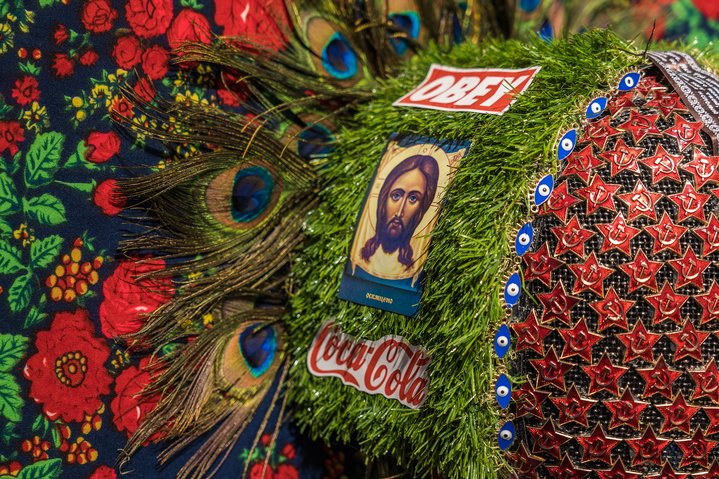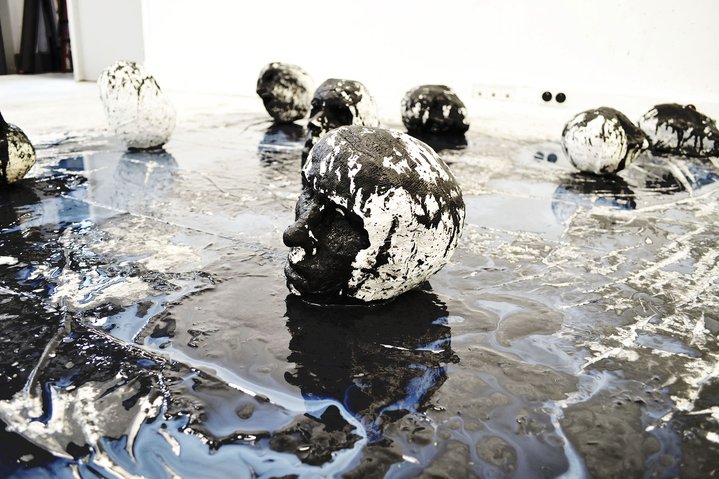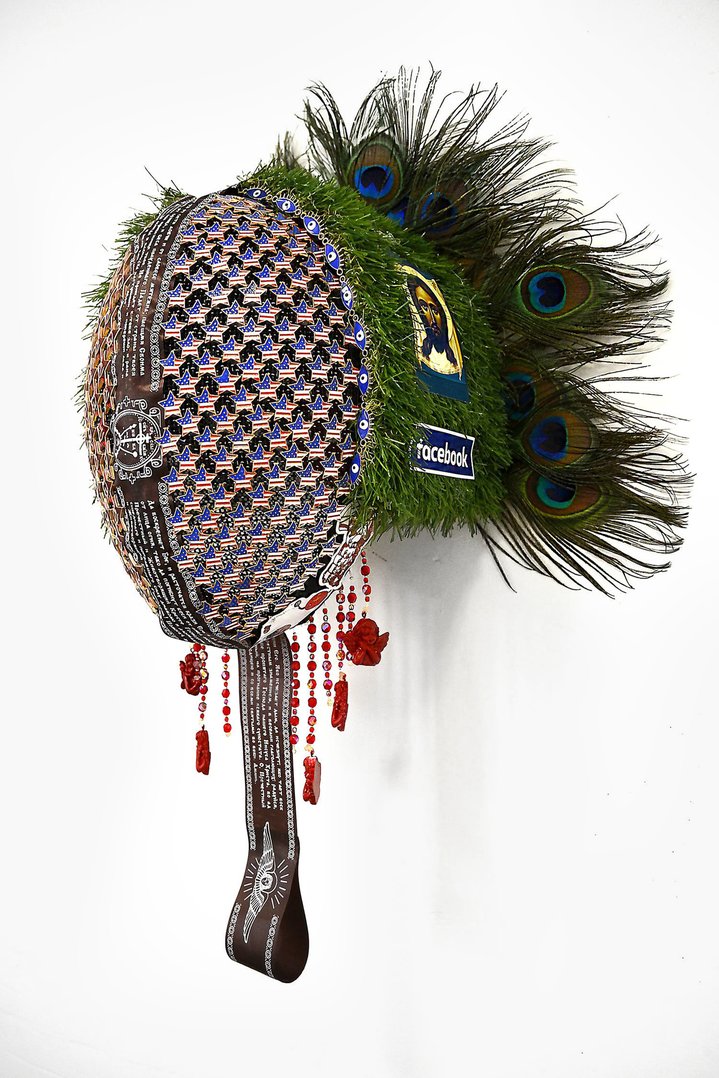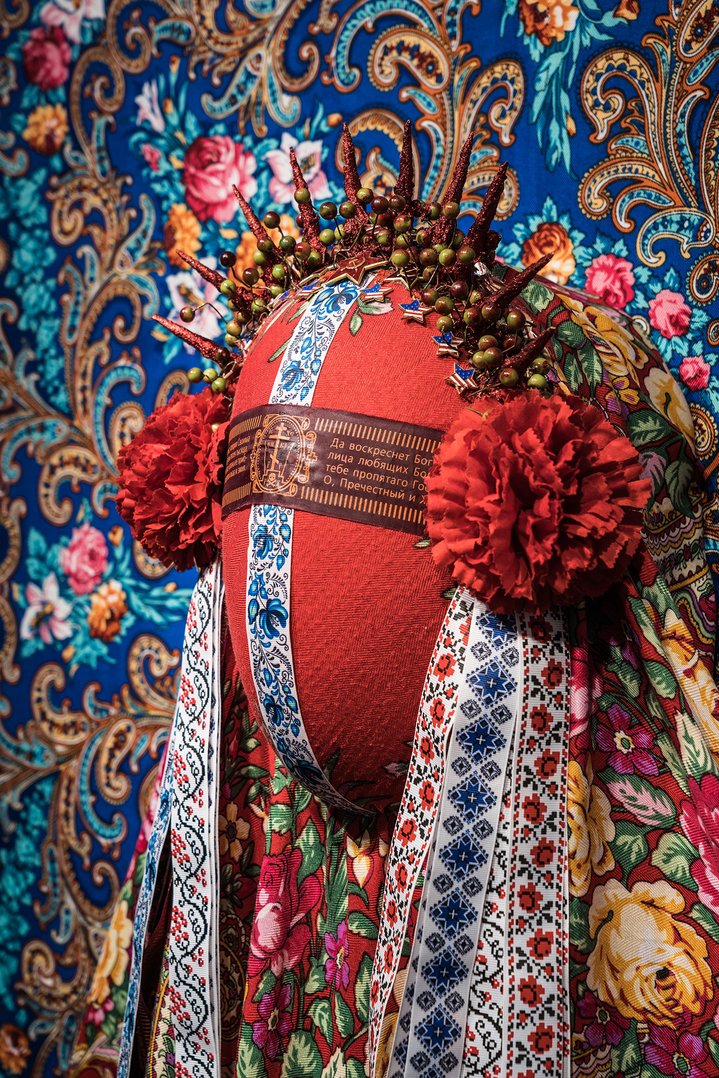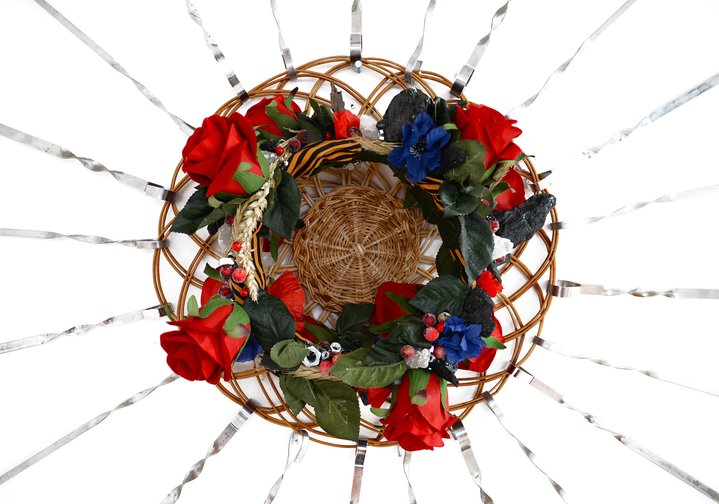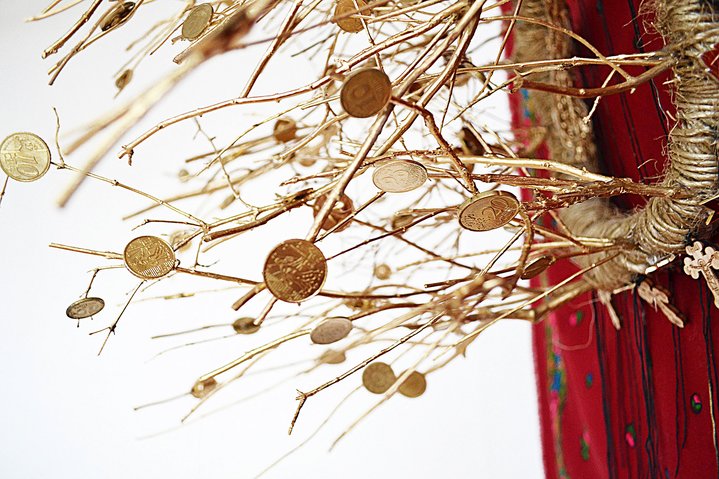Sasha Zaitseva: a young artist from Ukraine who paints with coal and blood

Sasha Zaitseva. Courtesy of the artist
Sasha Zaitseva was born in the city of Donetsk in 1994. At the end of 2012 she went to Paris to study art and has been living there ever since. She grew up in a Russian-Ukrainian family near the border between the two nations, and dual cultural identity is one of the main themes of her work.
“My projects ‘Masks’ and ‘Wreaths’ relate to the two cultures to which I belong. Things that we see at first sight immediately create strong impressions, so in my work I have used fragments of things I wanted to keep so they did not disappear, such as what shows we watched on TV, what food we used to eat, the things which surrounded us at home. If you don’t have a past - or if it is taken away from you - then you don’t carry any cultural testimony with you. Everything becomes a part of your personality, even the building of the school you went to as a kid is part of you, and if it is destroyed, you have a hole left inside you”. Sasha talks about her early works, which have been exhibited throughout Europe and the USA. “Now if the context and curation were favourable, I would love to show my art to the Russian or Ukrainian public”, she adds.
In 2017 she made an installation called ‘Broken Heads’ consisting of several plaster heads of various size lying on the floor and covered with black paint, soil and oil. “It was my comment on how Europe reacted to the Ukrainian conflict back in 2014, how people heard something but preferred not to pay too much attention. This attitude annoyed me, so I made these self-portrait heads which are very fragile, and if you walk among them you can easily break them”. All of Zaitseva’s installations are designed to be on a large scale and immerse the viewer into an atmosphere of threat and discomfort. For example, a pile of inflated black plastic refuse sacks called “Barricades” makes you feel sick not only because they smell bad but also because they look deathly.
One of Zaitseva’s most powerful projects is a series of paintings “Remembering my Homeland” made in 2018 after she returned to Donetsk. She worked with powdered coal from mines in the Donbass region, and animal blood. “My friend and I were walking along the street, and I saw a spot of blood on the ground, which had been there for long time, already covered with dust and dirt. It impressed me a lot. I saw in a moment of clarity all four years of war in this one spot even though by that time people had already started to forget it and carry on with their lives as if nothing was happening. But you cannot ignore the consequences, they surround you and occasionally push you out of a state of normality.”
“Since 2014 I have been thinking about what anti-war art should be like and I still can not find the right answer. The problem of anti-war art is that it is still art. It is impossible to understand what this art is saying if you have not experienced it on your own. Photography is perhaps the most accurate medium. When I was writing my thesis on anti-war art at university, I came across the artist Martha Rosler and her collages dedicated to the Vietnam war. That was exactly what I myself wanted to say but I could not find a way. A collage with dead bodies in your living room is the perfect statement, resonating also with Susan Sontag’s essay “The Pain of Others” which is being quoted a lot these days.”. Sasha says that she even wanted to make something resembling Rosler’s collages but based on the context of her hometown.
At the end of 2019 Zaitseva went to Donetsk and started a new project in which she collected locally sourced old pieces of fabric and ribbons to make little “amulet dolls” called “motanki” in the ancient Slavic tradition. The dolls were meant to be for everyone living in the city, to create a big installation. However, once the pandemic began, she had to stop working. “I would like to make something about what life will be like after the fighting ends. Right now it is too hard, there are ideas which I reject for they are too superficial, it should be more than just a flag or a peace dove. Many artists that I know are paralyzed, we all need time to deal with the inevitable PTSD, to process current events and reflect them in our art”, Sasha says. Now she is with a group of Russian and Ukrainian artists who are working together in order to organize a charity exhibition in Paris. Hopefully it will happen soon, as well as peace in Europe.







